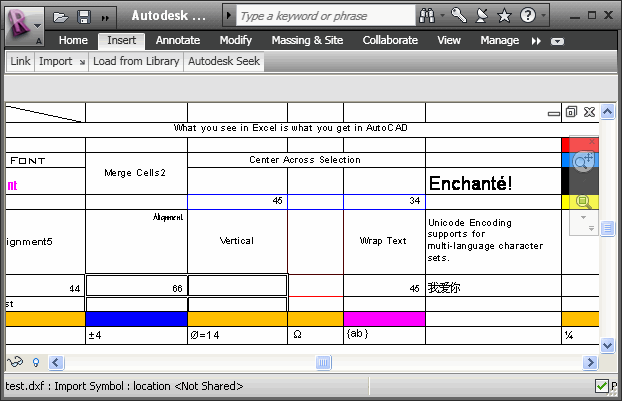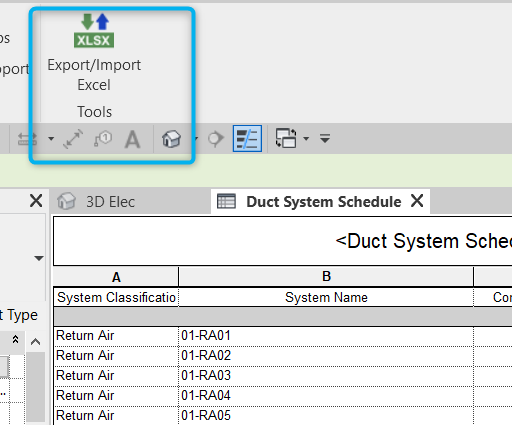Excel-to-Revit: A Game-Changing Operations for Architectural Layout - Introducing the Secrets
Introducing excel-to-revit, the game-changing workflow that will transform your layout procedure. With excel-to-revit combination, you can simplify your architectural layout, unlock efficiency, and maximize partnership within your team. Obtain all set to take your building design to the following degree with excel-to-revit!
The Power of Excel-to-Revit Integration

Imagine the convenience of being able to edit and update task data in Excel, and immediately see those changes shown in your Revit model. No a lot more manual data entrance or tiresome updates. With Excel-to-Revit combination, you can conserve time and lower mistakes by leveraging the power of Excel's features and formulas to automatically create accurate information in Revit.
Not just does this integration enhance performance, however it also improves collaboration among team participants. You can conveniently share Excel documents with associates, that can then import the information into their Revit versions. This advertises a smooth exchange of information and makes certain that everybody is dealing with the most current information.

Simplifying Building Style With Excel-To-Revit
Streamlining building style is made less complicated with the use of Excel-to-Revit (import excel into revit). With this effective combination, you can maximize your workflow and save beneficial time throughout the layout process. By leveraging the abilities of Excel and Revit, you can seamlessly transfer data in between both systems, removing the requirement for hands-on data entry and decreasing the danger of mistakes
Excel-to-Revit enables you to import and export information easily, enabling you to conveniently upgrade and customize your architectural layouts. You can develop timetables, determine amounts, and produce records in Excel, and afterwards transfer that data directly right into your Revit version. This assimilation ensures that your design info is constantly current and integrated, removing the requirement for manual updates and decreasing the possibilities of inconsistencies.
By using Excel-to-Revit, you can also benefit from the effective computational abilities of Excel. You can do intricate calculations, analyze data, and automate repeated tasks, all within Excel. Then, with just a couple of clicks, you can import the outcomes back into Revit, enabling you to make informed style choices and maximize your architectural designs.
Opening Effectiveness: Exploring the Excel-to-Revit Workflow
Optimize your performance by seamlessly incorporating Excel and Revit for a much more efficient process. With the Excel-to-Revit workflow, you can open a whole new degree of efficiency in your building style process. By making use of the power of Excel's data monitoring abilities and combining it with the flexibility and precision of Revit, you can enhance your style process and save important time.
One of the key advantages of this assimilation is the capacity to import and export information between Excel and Revit. This suggests that you can conveniently transfer project information, such as area timetables or material amounts, from one software application to the other, eliminating the demand for manual information access and lowering the chances of mistakes. You can additionally create personalized solutions and estimations in Excel to automate repeated jobs and execute complex computations, which can after that be perfectly incorporated right into your Revit models.
In Addition, the Excel-to-Revit process permits better control and collaboration in between group members. With Excel serving as a main information hub, several staff member can function on different aspects of the job all at once, updating and sharing info in real-time. This not only enhances communication however likewise makes certain that everyone is working with one of the most updated information, getting rid of the threat of incongruities.
Taking Full Advantage Of Cooperation: Excel-to-Revit for Architectural Teams
By seamlessly integrating Excel and Revit, building groups can greatly enhance cooperation and attain more reliable layout outcomes. When using this effective operations, you can easily move information between Excel spreadsheets and Revit versions, improving the layout process and improving interaction amongst group members.
In addition, by leveraging Excel's effective computation capabilities, you can perform complex estimations and evaluation on your layout information, driving and giving beneficial understandings informed decision-making. This integration also allows you to export information from Revit to Excel, allowing you to produce thorough records, charts, and graphs for presentations and evaluation. This collective process promotes reliable communication and sychronisation among employee, as Excel works as a main hub for information management and sharing.
Total, by welcoming the Excel-to-Revit process, building groups can accomplish higher degrees of partnership, effectiveness, and precision in their design process. revit plugins. This integration encourages groups to collaborate flawlessly, guaranteeing that every person gets on the very same page and adding to the success of the job
Unveiling the Tricks of Excel-to-Revit Integration

One of the tricks of Excel-to-Revit combination is the capability to take advantage of the power of solutions and estimations in Excel to drive criteria and generate complex geometries in Revit. You can link Excel spreadsheets to Revit families, allowing you to input data directly right into the spread sheet and have it immediately update in the Revit design. This enhances the style process and guarantees precision and consistency throughout the job.
One more secret is the capability to develop custom-made schedules and reports in Excel, making use of data drawn out from Revit. This allows you to picture and evaluate job info in such a way that is not possible within Revit alone. You can conveniently create quantity liftoffs, price estimates, and job timelines, supplying valuable insights for decision-making and project management.
On top of that, Excel-to-Revit integration enables efficient partnership amongst staff member. Multiple customers can work with the very same Excel spread sheet concurrently, making it much easier to collaborate and track adjustments. You can additionally make use of click over here now Excel's commenting feature to give responses or communicate layout modifications.
Conclusion
So there you have it, the keys of excel-to-revit integration have actually been introduced. This game-changing workflow has the power to simplify building layout, unlock effectiveness, and take full advantage of partnership for architectural groups. By incorporating the power of Excel and Revit, designers can now work more efficiently, conserve time, and generate far better layouts. So why wait? Begin including excel-to-revit integration right into your architectural design process today and revolutionize the way you function.
With simply a couple of visit this web-site clicks, you can import the outcomes back right into Revit, allowing you to make educated style decisions and enhance your building layouts.
By making use of the power of Excel's information management abilities and combining it with the flexibility and accuracy of Revit, you can improve your layout process and save useful time.
By perfectly integrating Excel and Revit, building teams can greatly boost collaboration and accomplish more reliable layout end results. When using this powerful process, you can easily move information in between Excel spreadsheets and Revit versions, simplifying the layout procedure and improving interaction among team participants.Moreover, by leveraging Excel's effective calculation capacities, you can do intricate calculations and evaluation on your style data, supplying beneficial insights and driving educated decision-making.